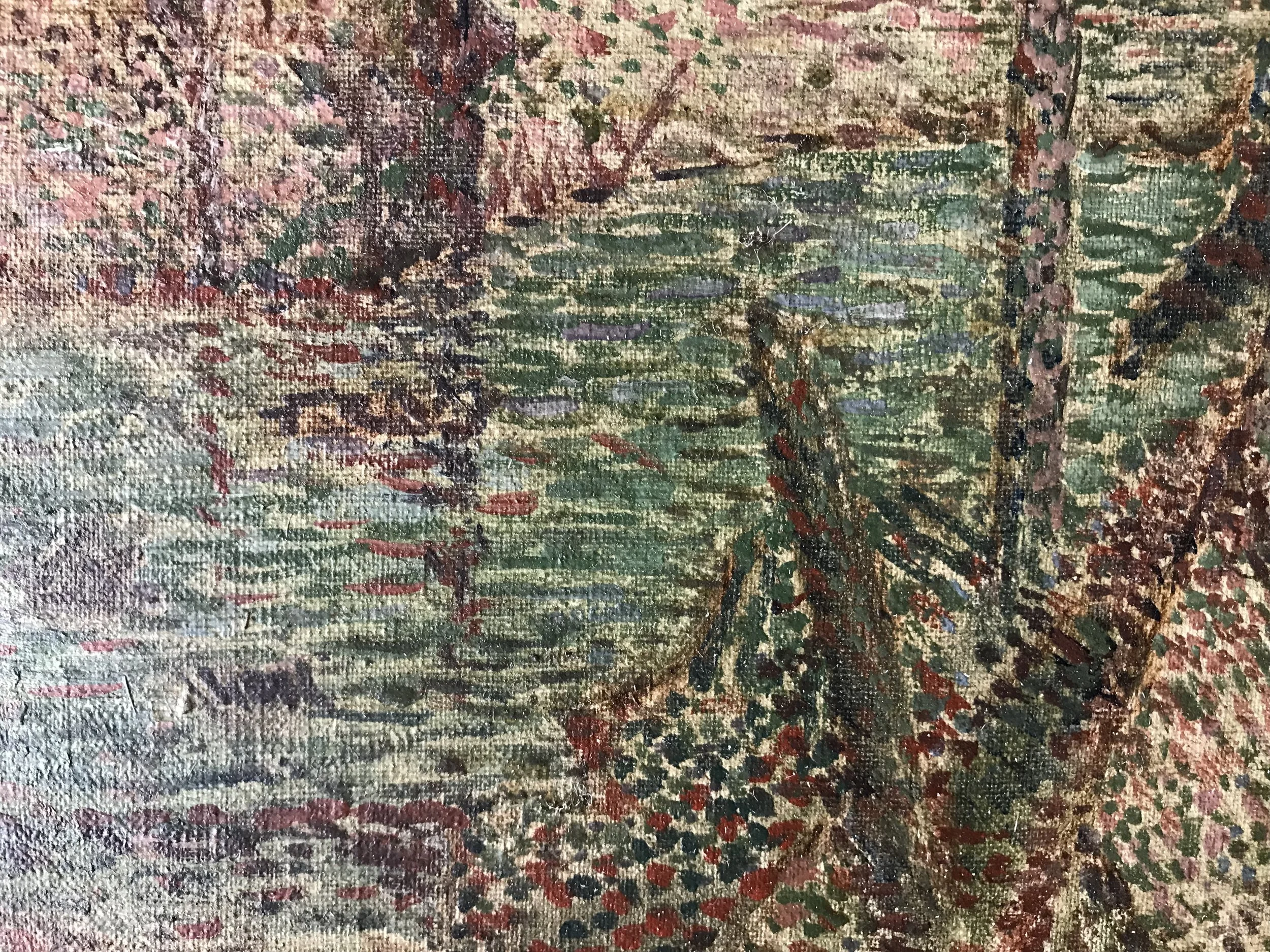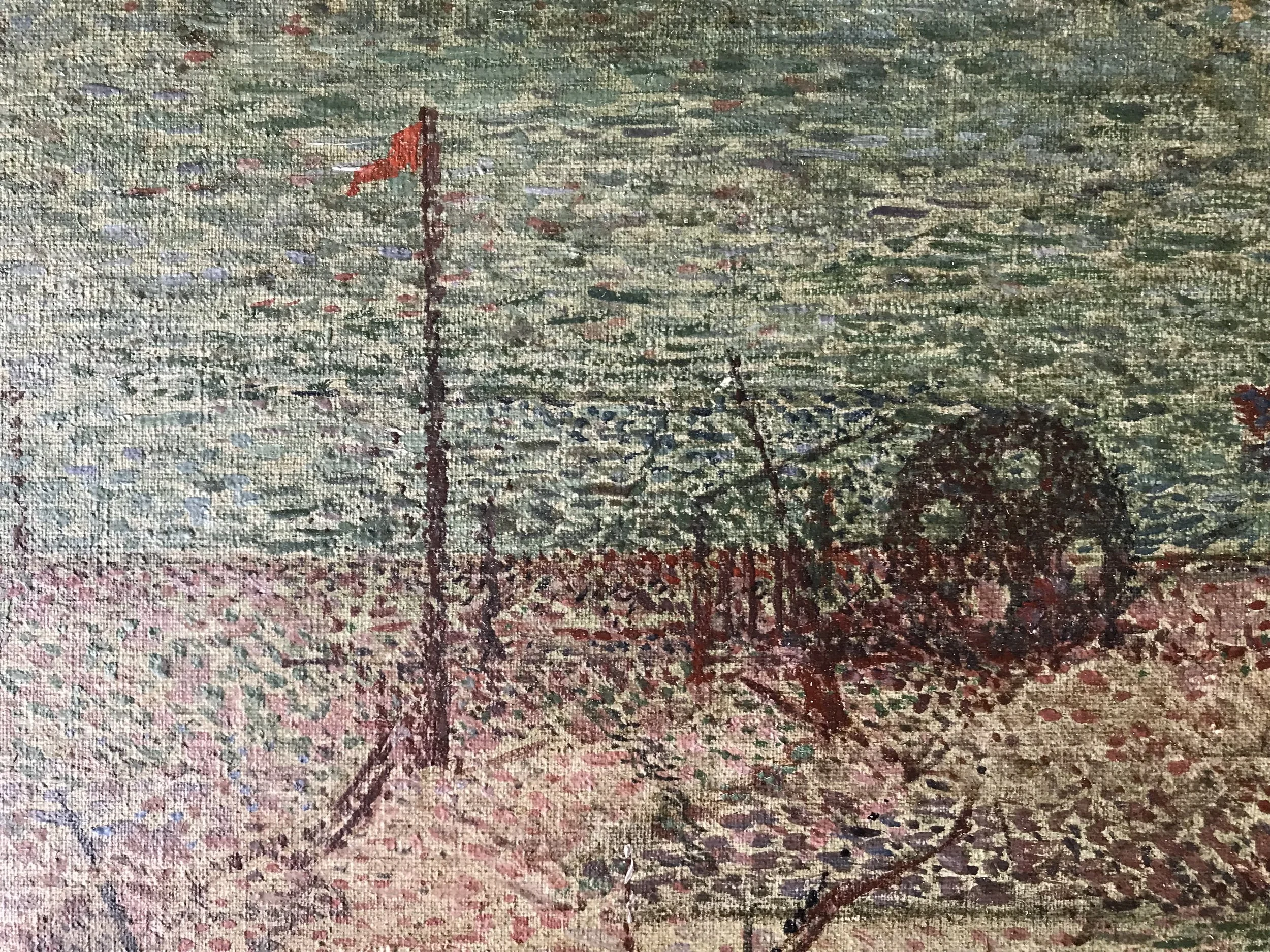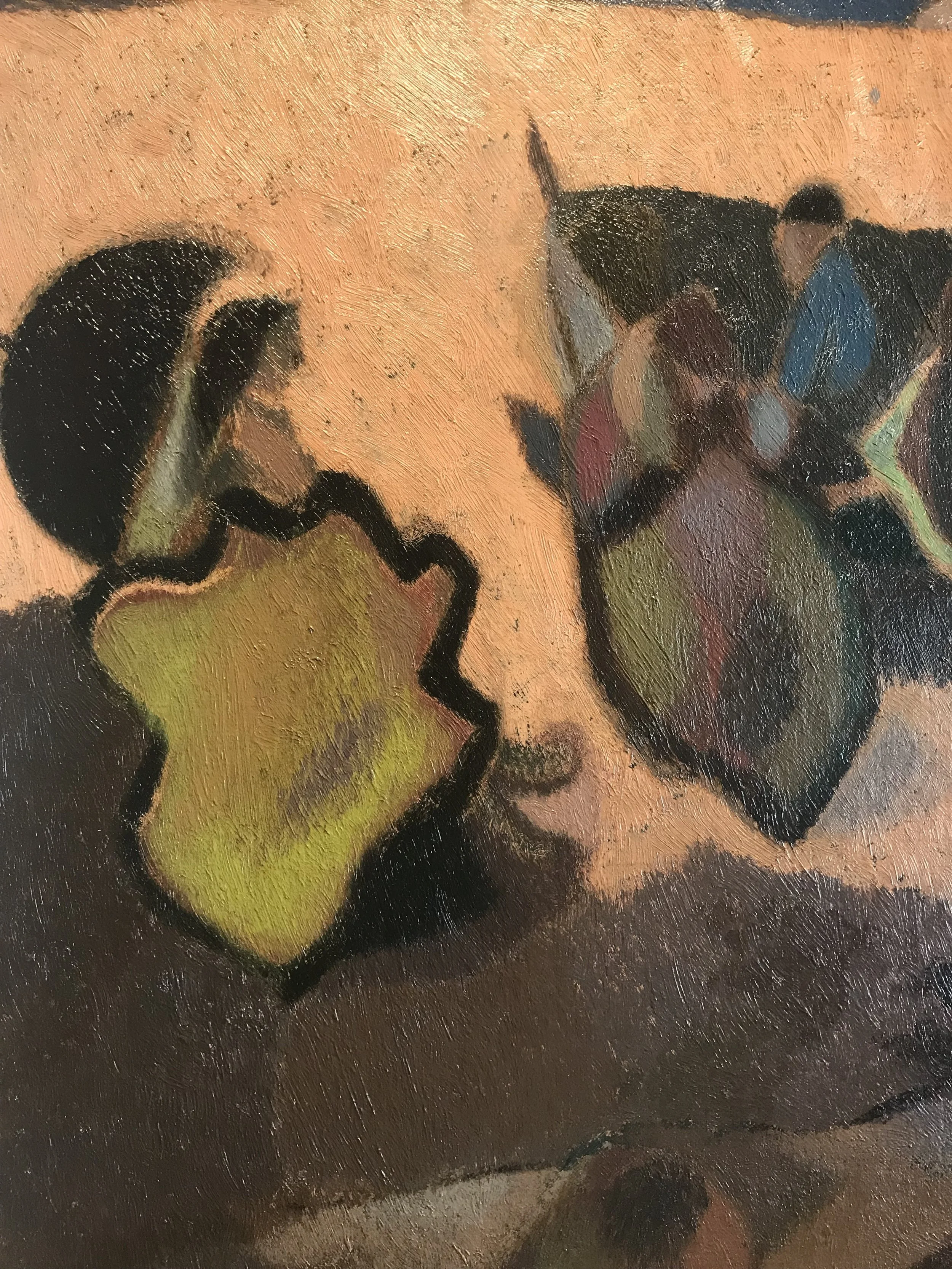Above: Josselin Bodley (1893-1974). Steamship at Sea, 1967. Acylic on canvas. (H:44 x W:36.5cm). SOLD. Below: John Doman Turner(1871-1938) The Kissing Bridge, Walberswick,1922. Watercolour and pencil on paper. (H:25.5 x W:34cm) SOLD. Alex Curry. Bailey Bridge, Walberswick,2018. Pen on paper. (H:38 x W:45cm)
Elliott Seabrooke (1886-1950). Heybridge Basin, 1947. Oil on canvas. (H:41 x W:51cm)
Seabrooke was born in Essex and studied at the Slade School of Art under Henry Tonks from 1906-11. After WW1 (when as a pacifist he served in the British Red Cross and won Italy's highest award for gallantry) he exhibited at the New English Art Club and the London Group, of which he was president in the 1940s.
This important work is one of the several that Seabrooke painted of Heybridge Basin - one of which is in the Tate - and this work was formerly in the collection of the actress Vivien Leigh.
Margaret Thomas NEAC,RBA 1916-2016. Window on the Quay, c.1970s. Oil on board.
This is a major work by Thomas that combines her still life compositions and watery landscapes within a single image. Instinctively a modern painter Thomas uses the modernist grid formed by the window frame and depicts the angular derrick on Orford Quay with Orford Ness beyond - with the single potted geranium on the windowsill she captures nature inside and machinery outside. Her work is included in many public collections including the Government Art Collection, the Scottish National Gallery of Modern Art and the National Museum of Wales.
Campbell Archibald Mellon ROI, RBA (1878 - 1955). Walberswick Common, near Southwold, with Blythburgh Church in the distance c.1930s.
Mellon settled in Gorleston on Sea, Norfolk, after WWI where he received tuition from John Arnesby Brown. He is known for his small, breezy and uncomplicated views of the East Anglian coast and this rarer landscape displays his love of 'juicy' and rich paint depicting a sunlit path between the heather with a figure next to the trees under the billowing clouds of a large Suffolk sky. He exhibited at the Royal Academy from 1924 - 55 and was elected to the Royal Institute of Painters in Oil in 1938.
Frank Beanland (1936- ) Blue Shadows, August 2000. Acrylic on board. SOLD
After studying at the Slade School of Art from 1959-61 and winning a scholarship to study in Sweden, Frank Beanland moved to Cornwall from 1962-4. He was associated with the Porthleven Group of Artists and adopted abstraction before teaching at Swansea College of Art and then moving to Suffolk in 1966. His early palette knife paintings gave way to the acclaimed spot paintings from 1965 which introduced his broad spectrum of colour. He later adopted a technique of using acrylic paints on low cost supports which encouraged greater risk taking, fluidity and layering in his paintings (much in evidence in this work). Blue Shadows celebrates the blue tinged light of his beloved coastal Suffolk.
Artists included in the display: Frank Beanland, John Arthur Dodgson, Campbell Archibald Mellon, Bertram Walter Priestman, Humphrey Spender, Harry Morley and Lionel Bulmer.
John Arthur Dodgson (1890-1969). The Beach.c 1950s. Oil on canvas.
Dodgson was born in India and studied at Oxford University before attending the Slade School of Art (1913-5). He exhibited at the New English Art Club and the London Group and lived at Chelsworth, Suffolk. He taught at Camberwell and Chelsea Schools of Art 1948-58 and had a retrospective at Beaux Arts Gallery in 1959. After his studio burnt down in 1964 he stated 'I had been saying to myself for some time "shall have to have a bonfire one day soon". He only saved four paintings from the devastating fire and this major work is one of only forty paintings in existence. It was included in his Beaux Art retrospective and exhibited at the Royal Academy, South London Gallery (1971) and the Fine Art Society in 1995.
Artists included in the display: Frank Beanland, John Arthur Dodgson, Campbell Archibald Mellon, Bertram Walter Priestman, Humphrey Spender, Harry Morley and Lionel Bulmer.
Come and see us!














